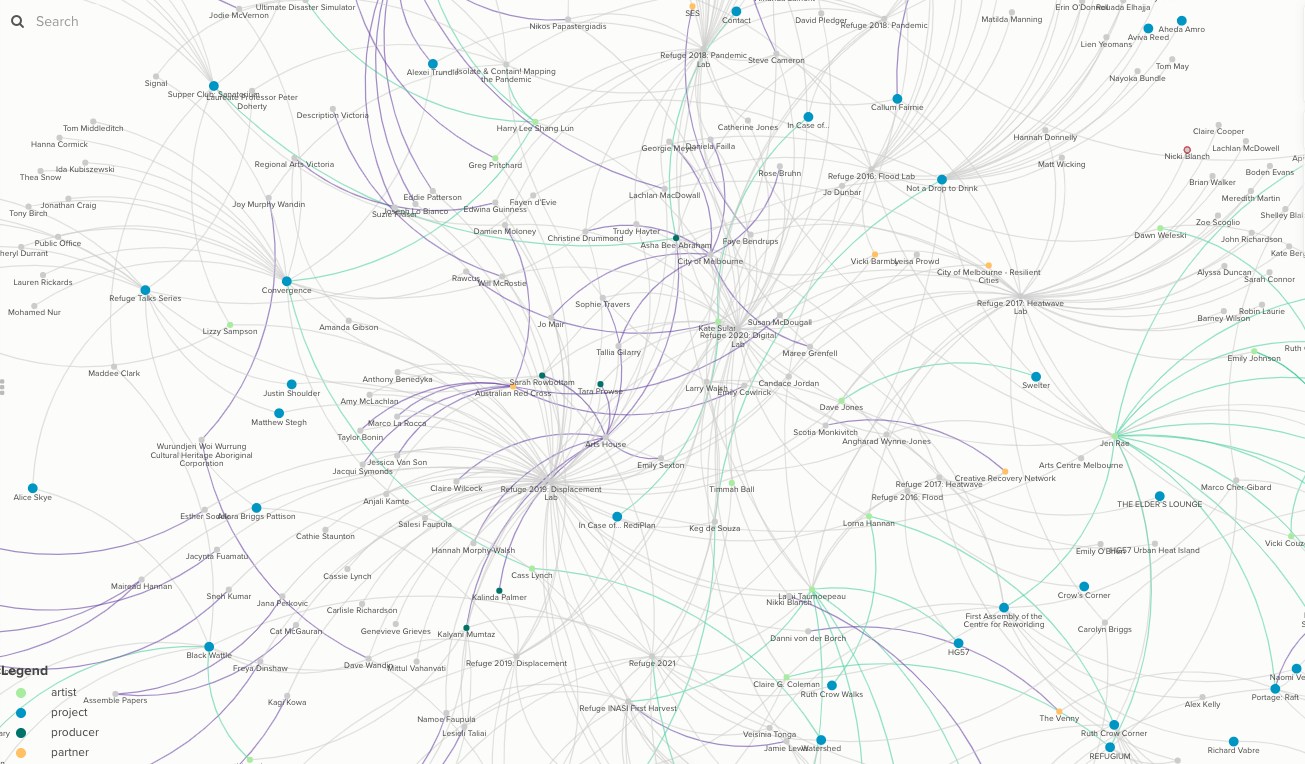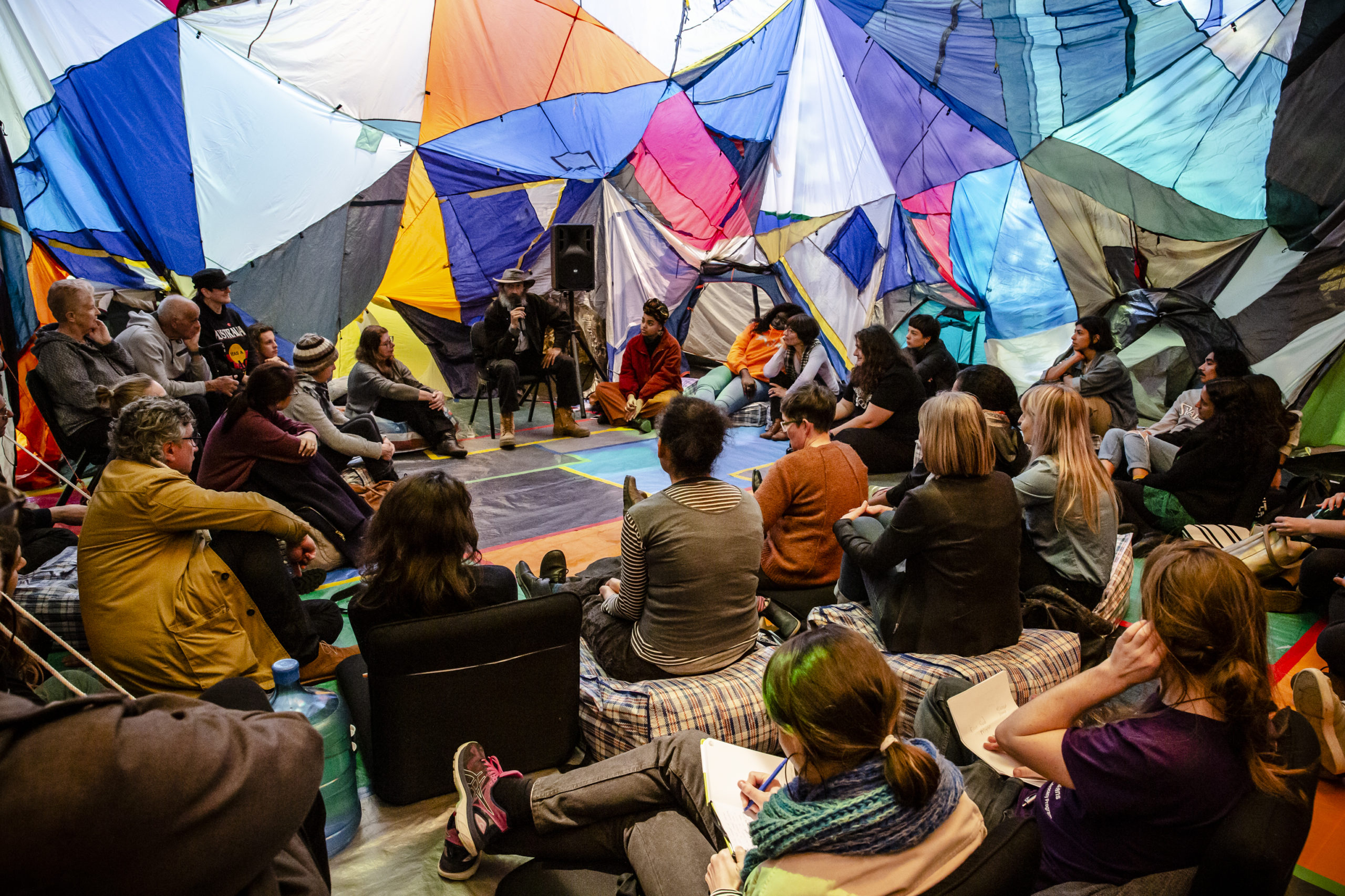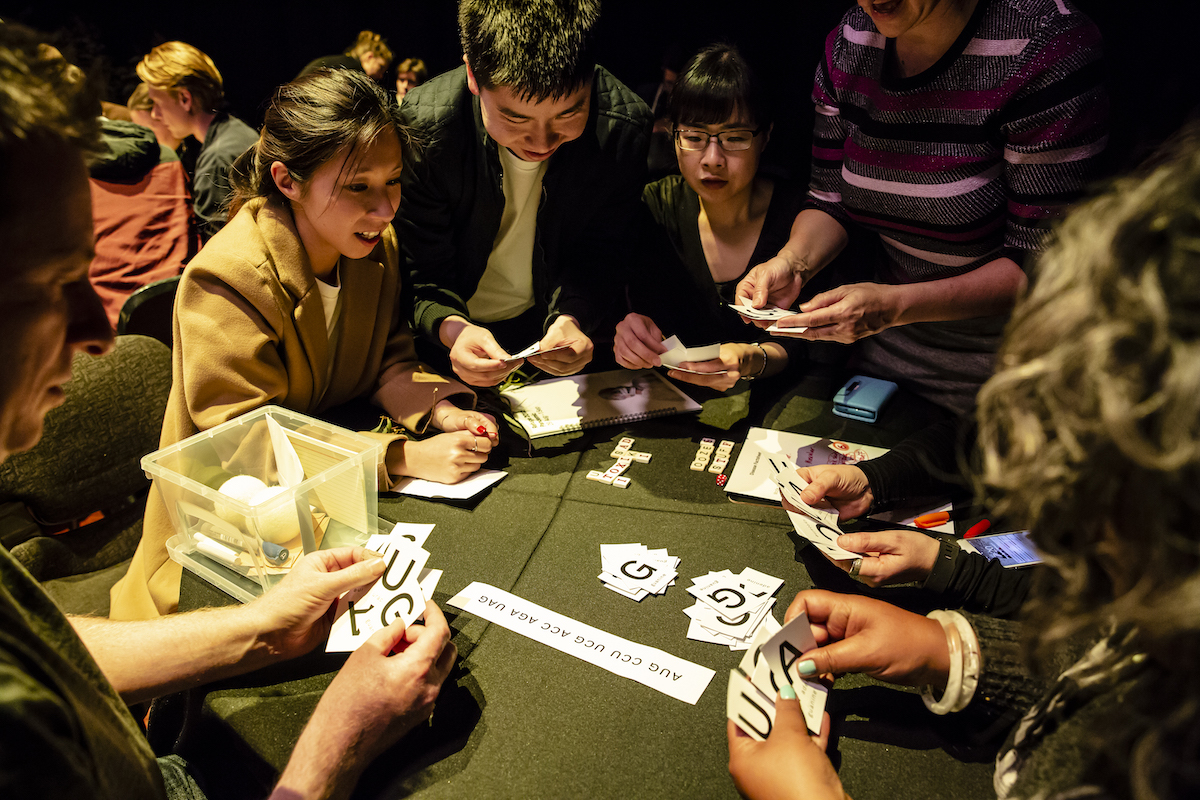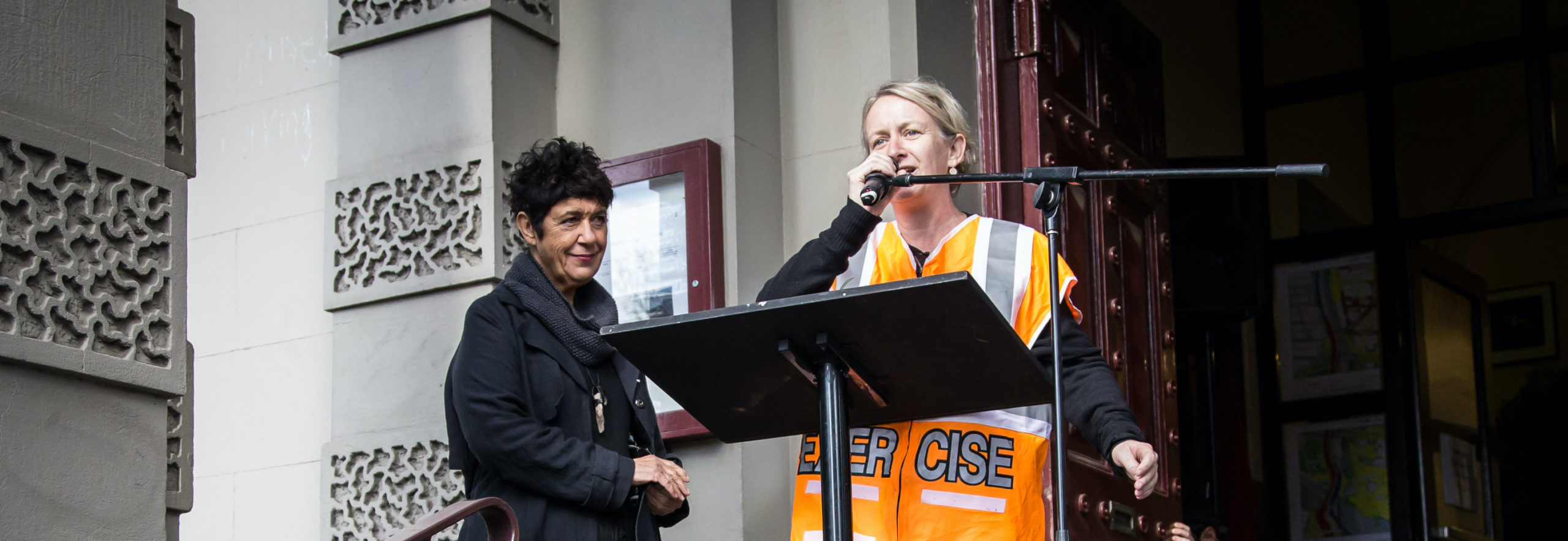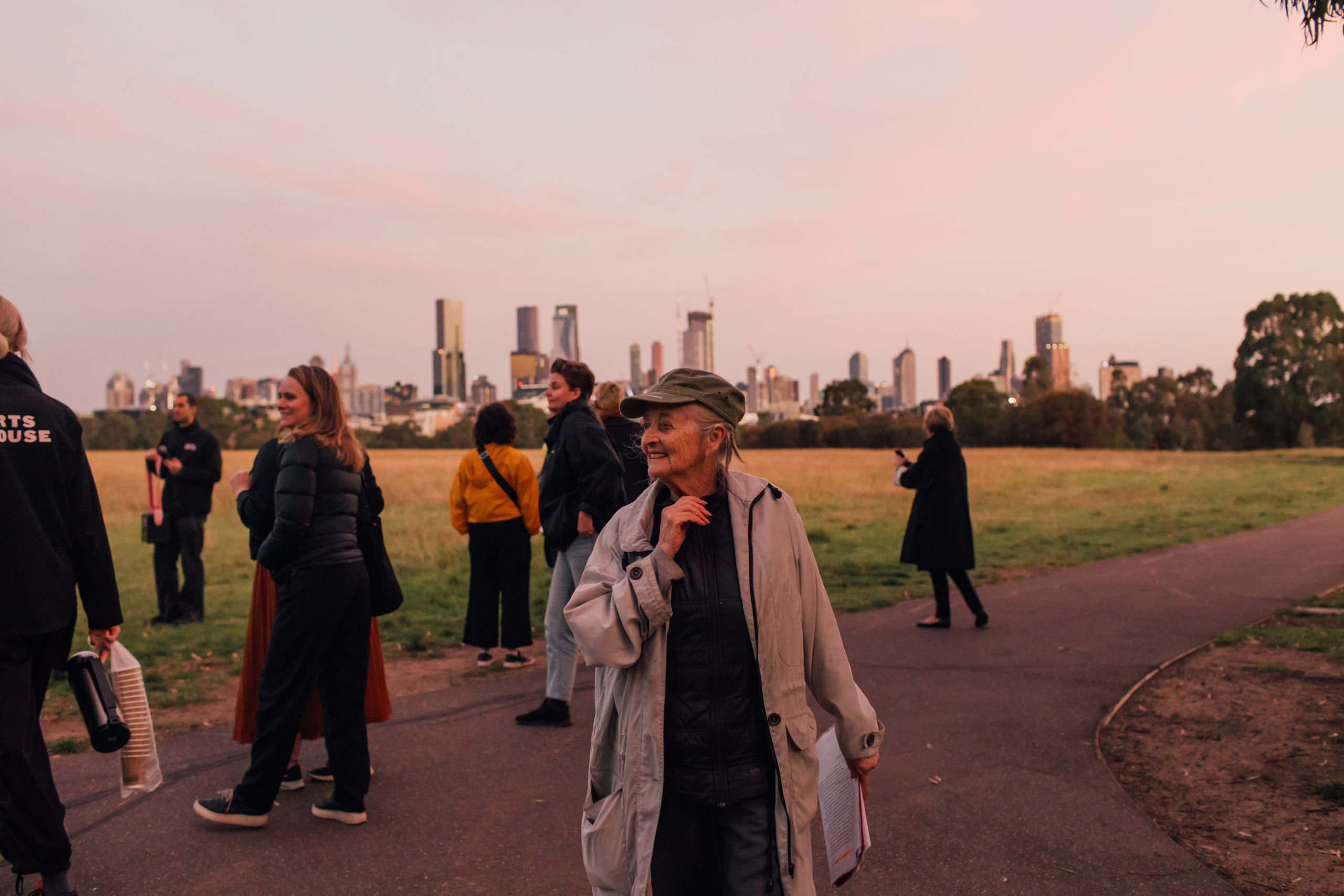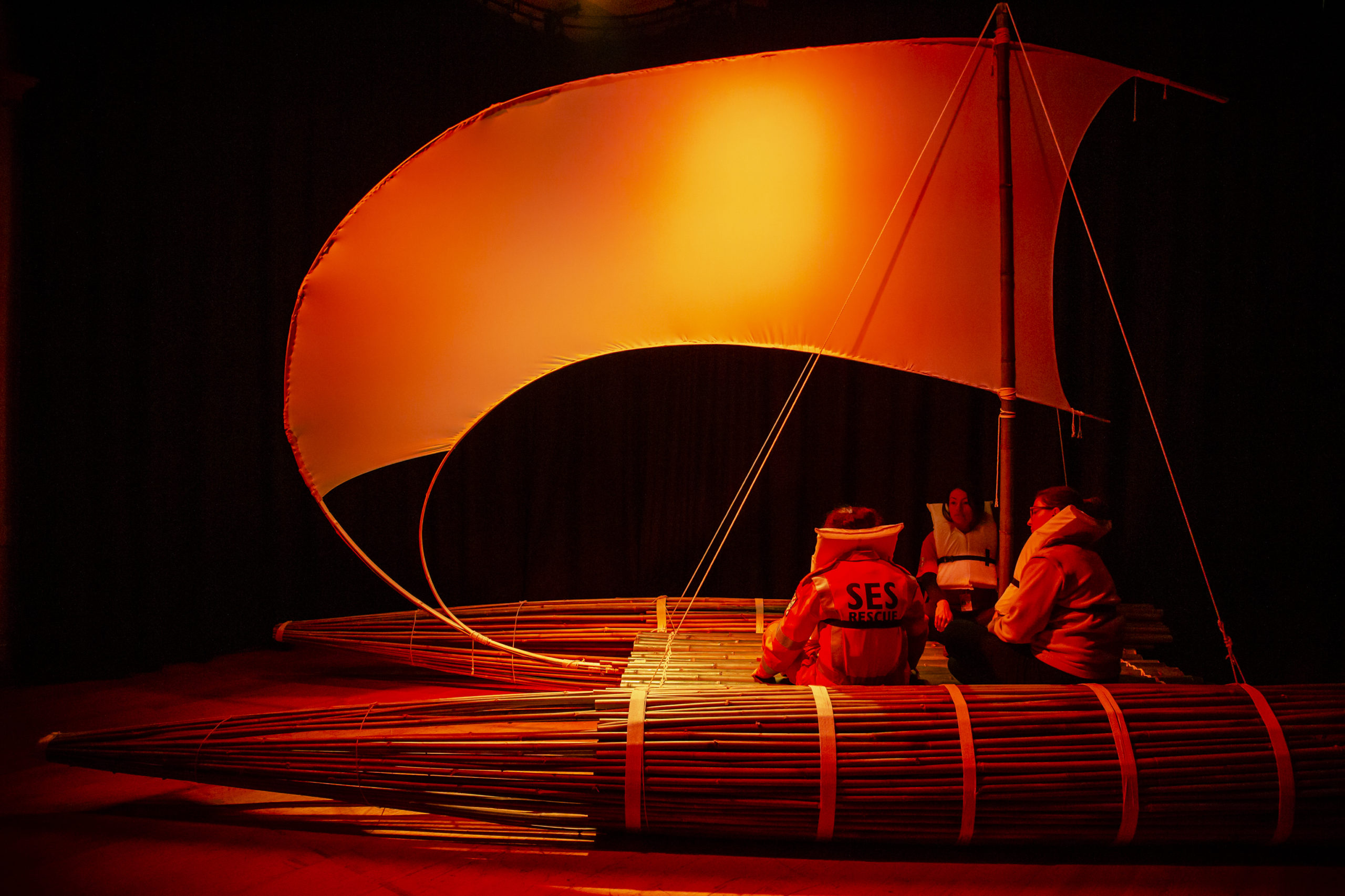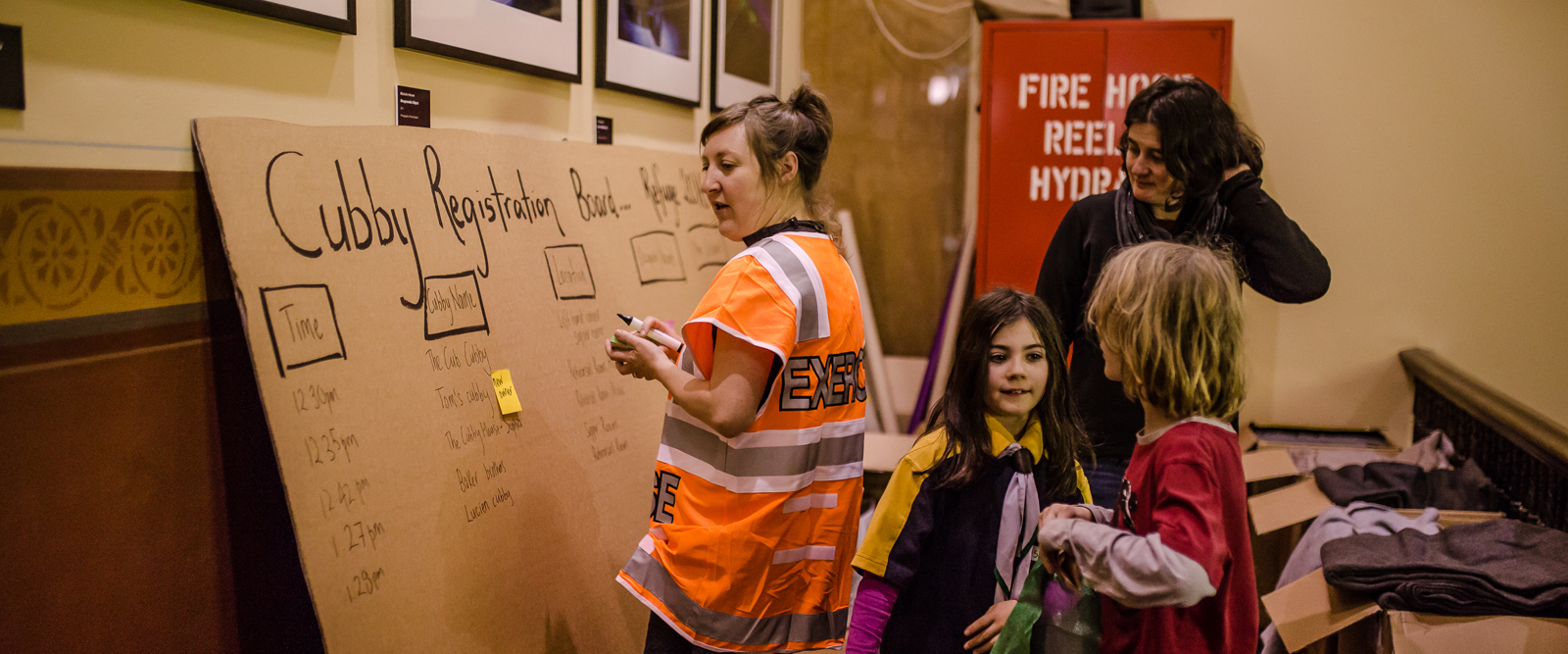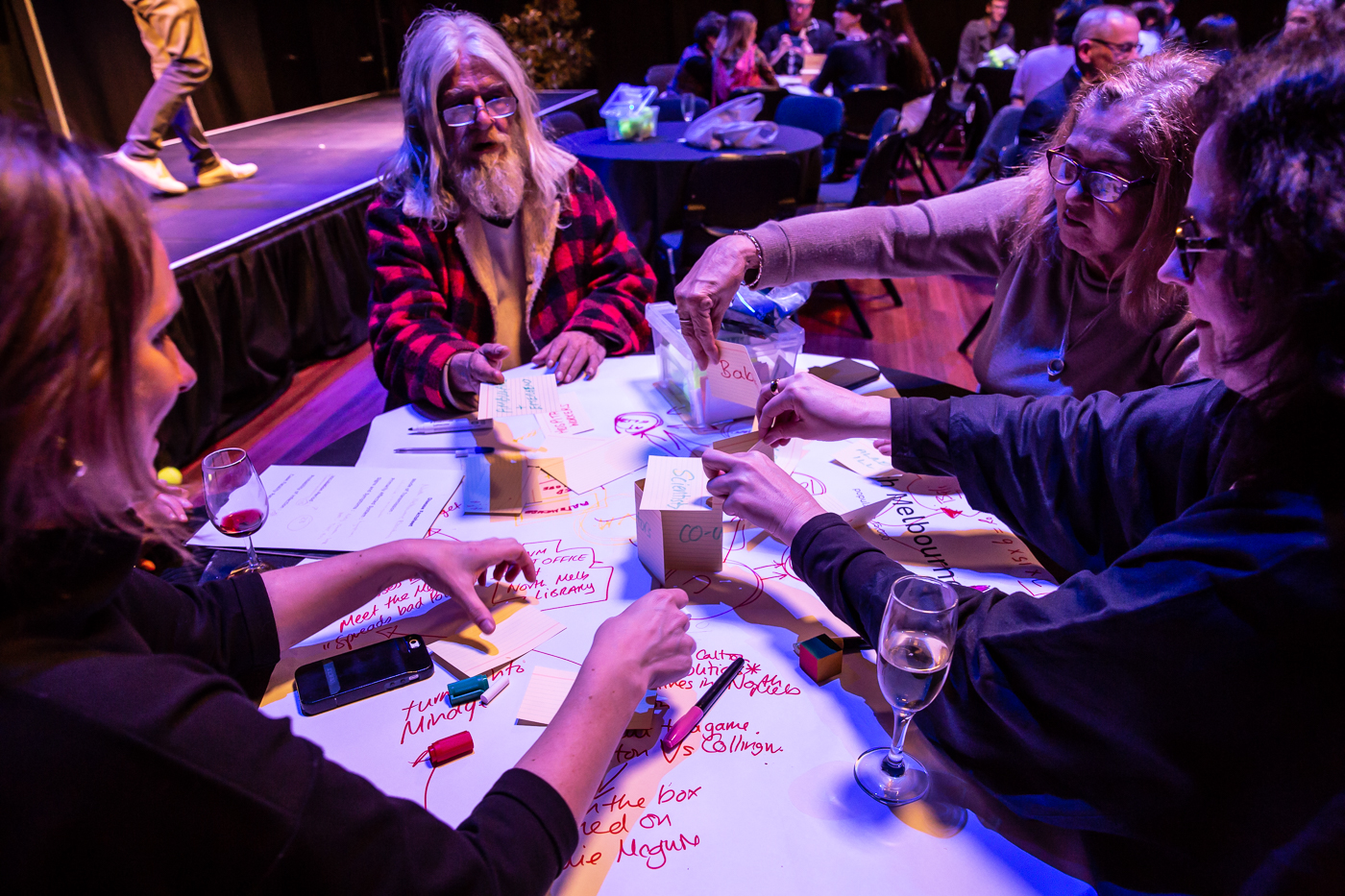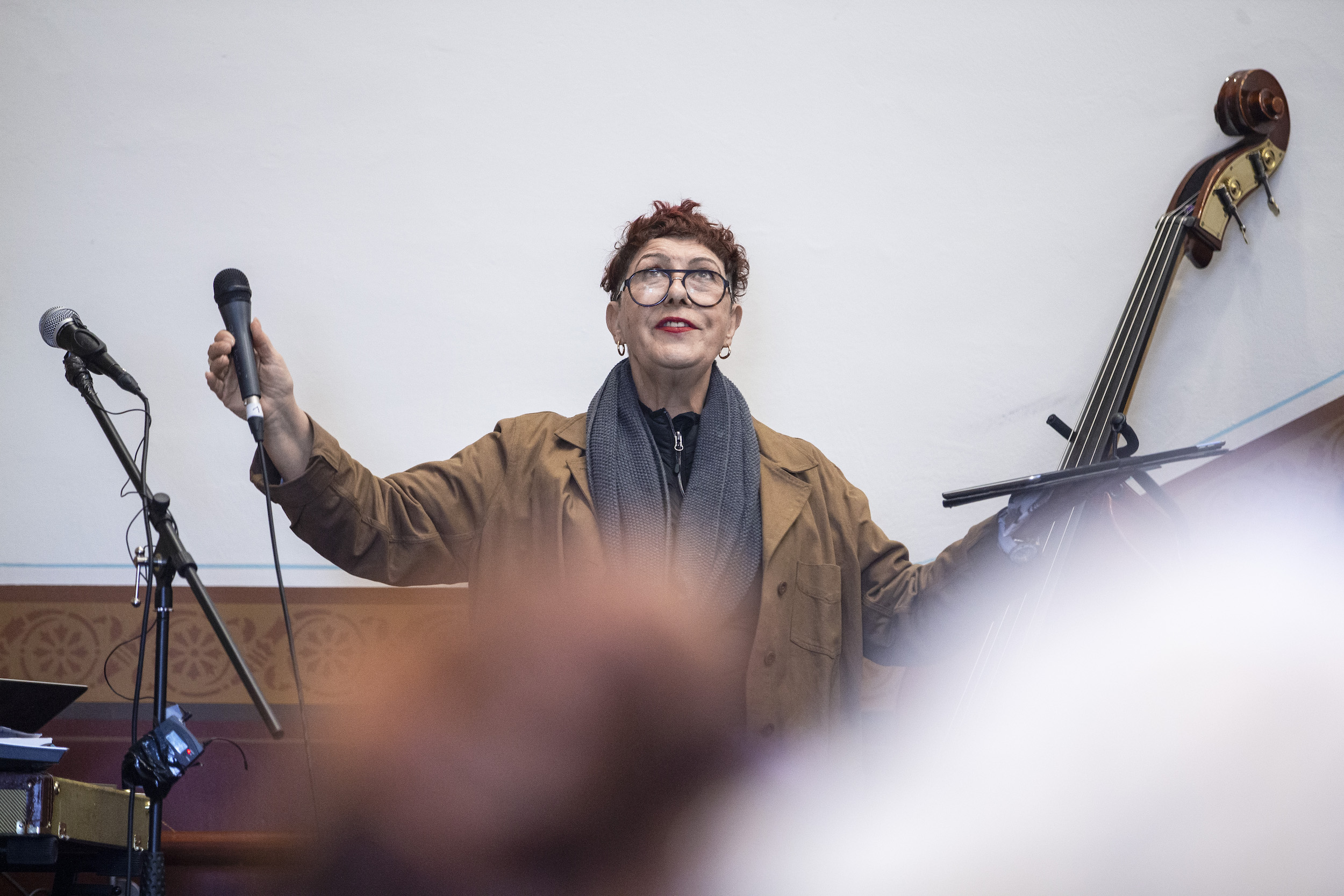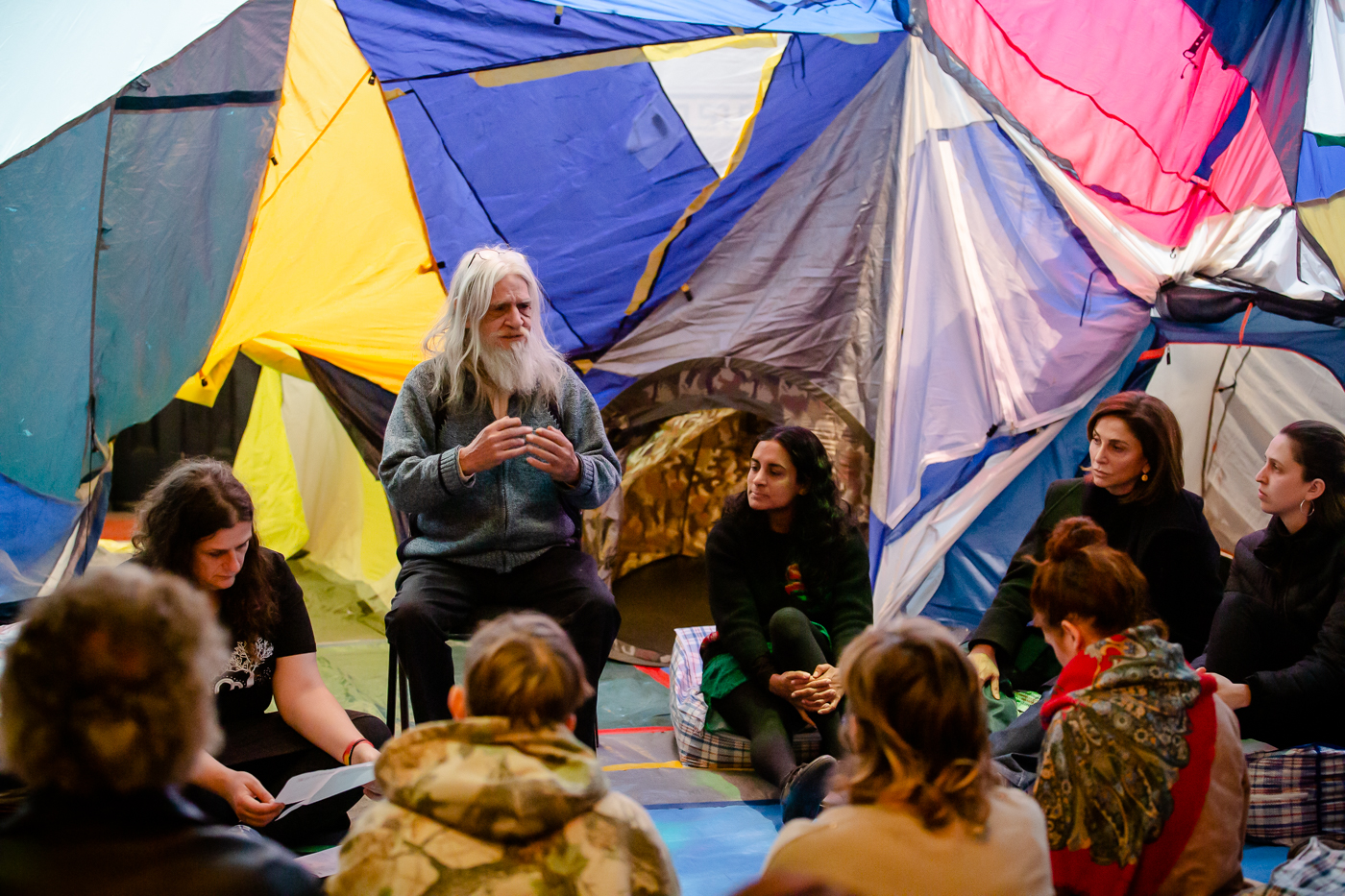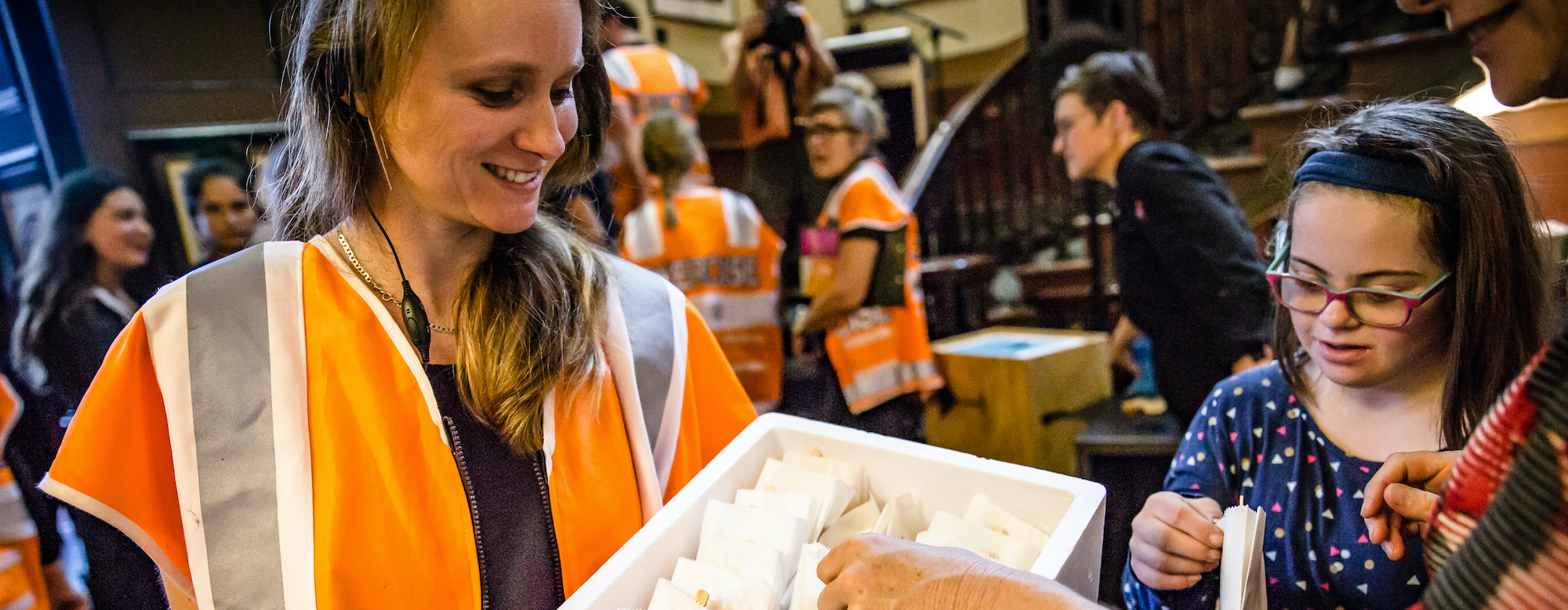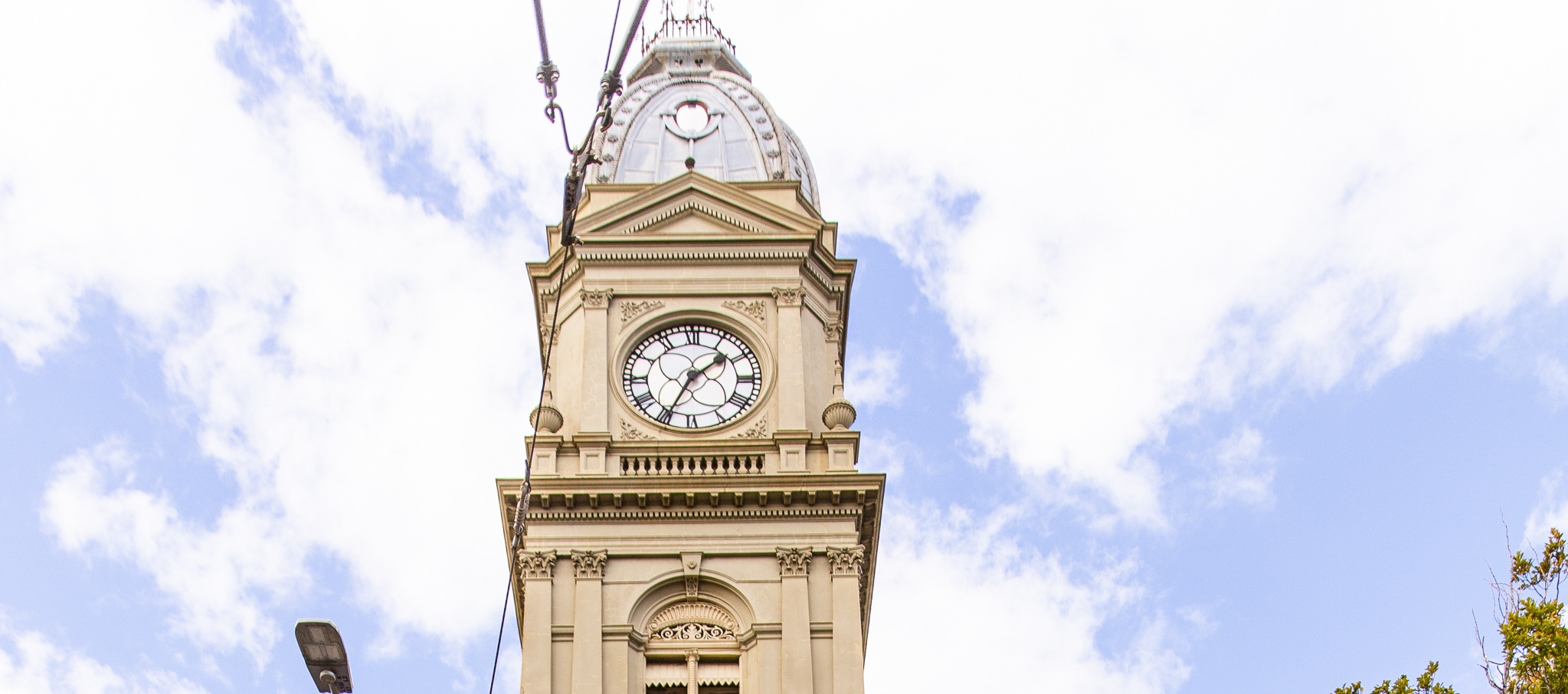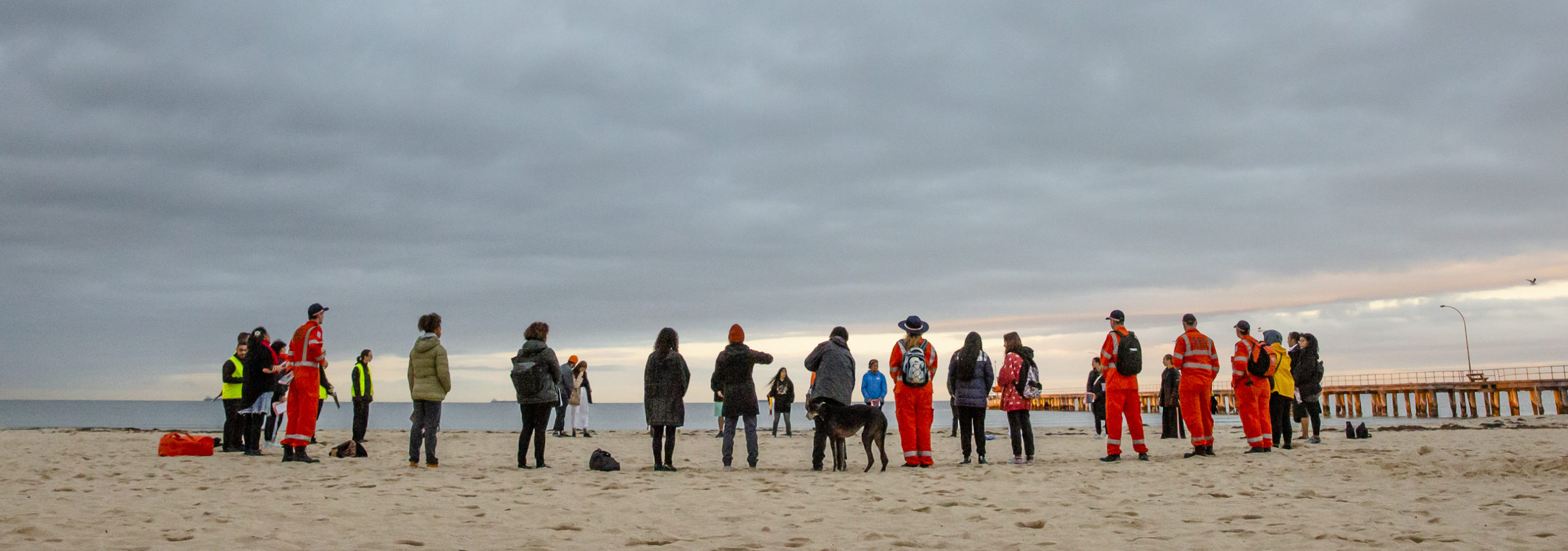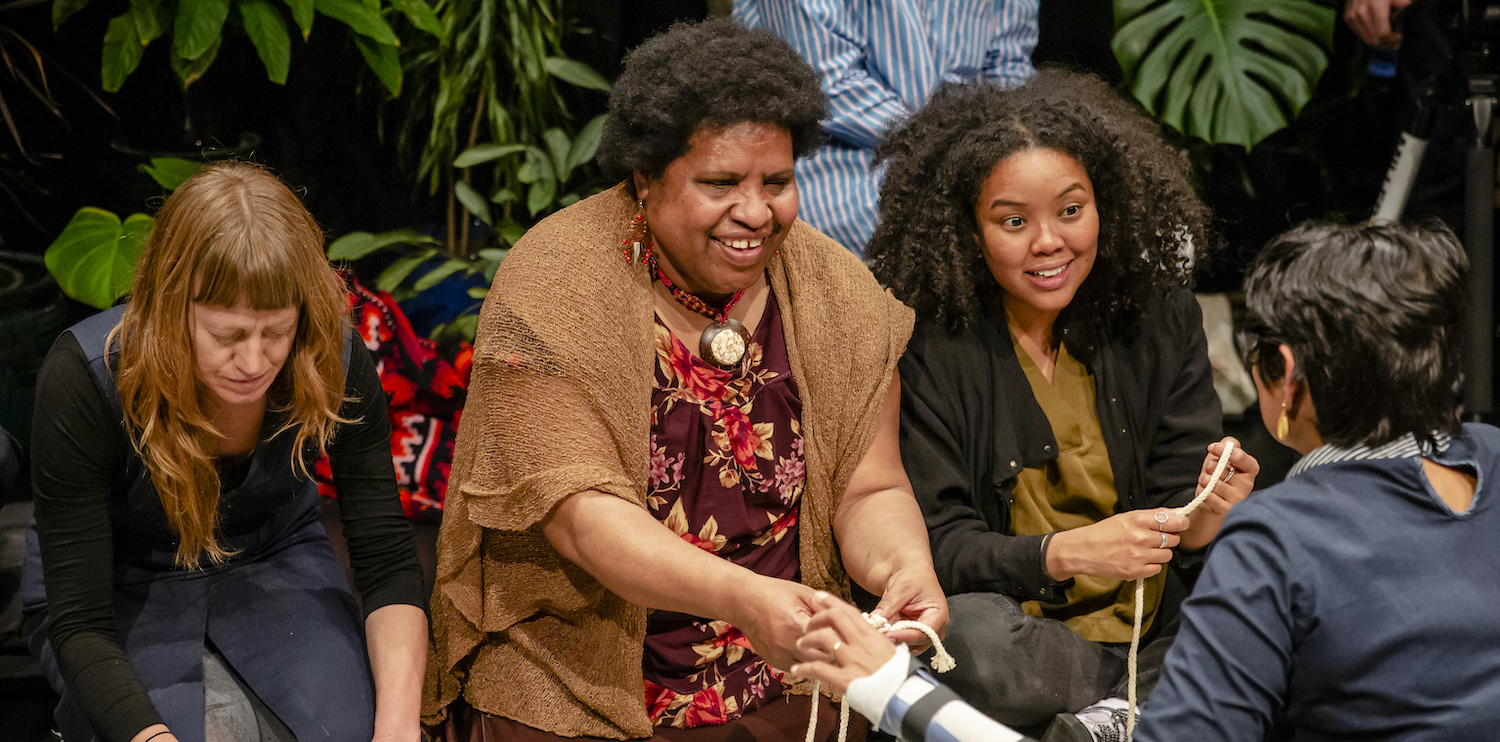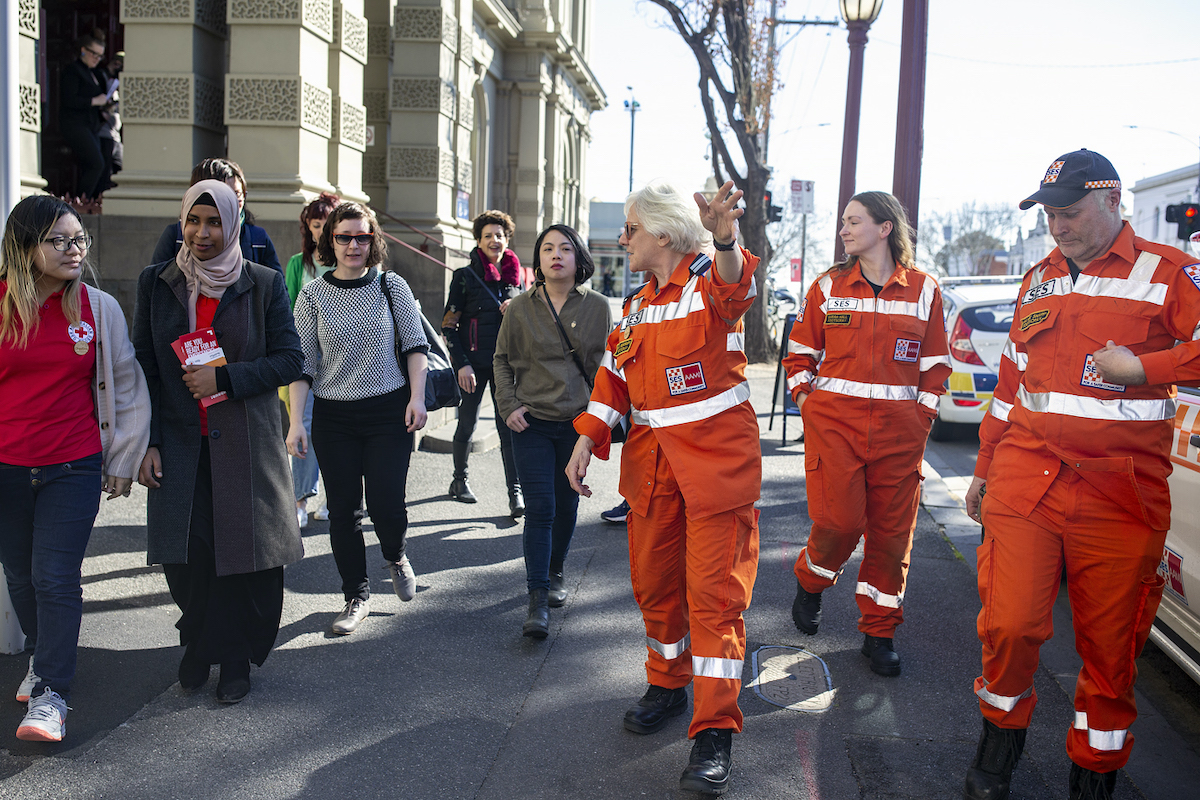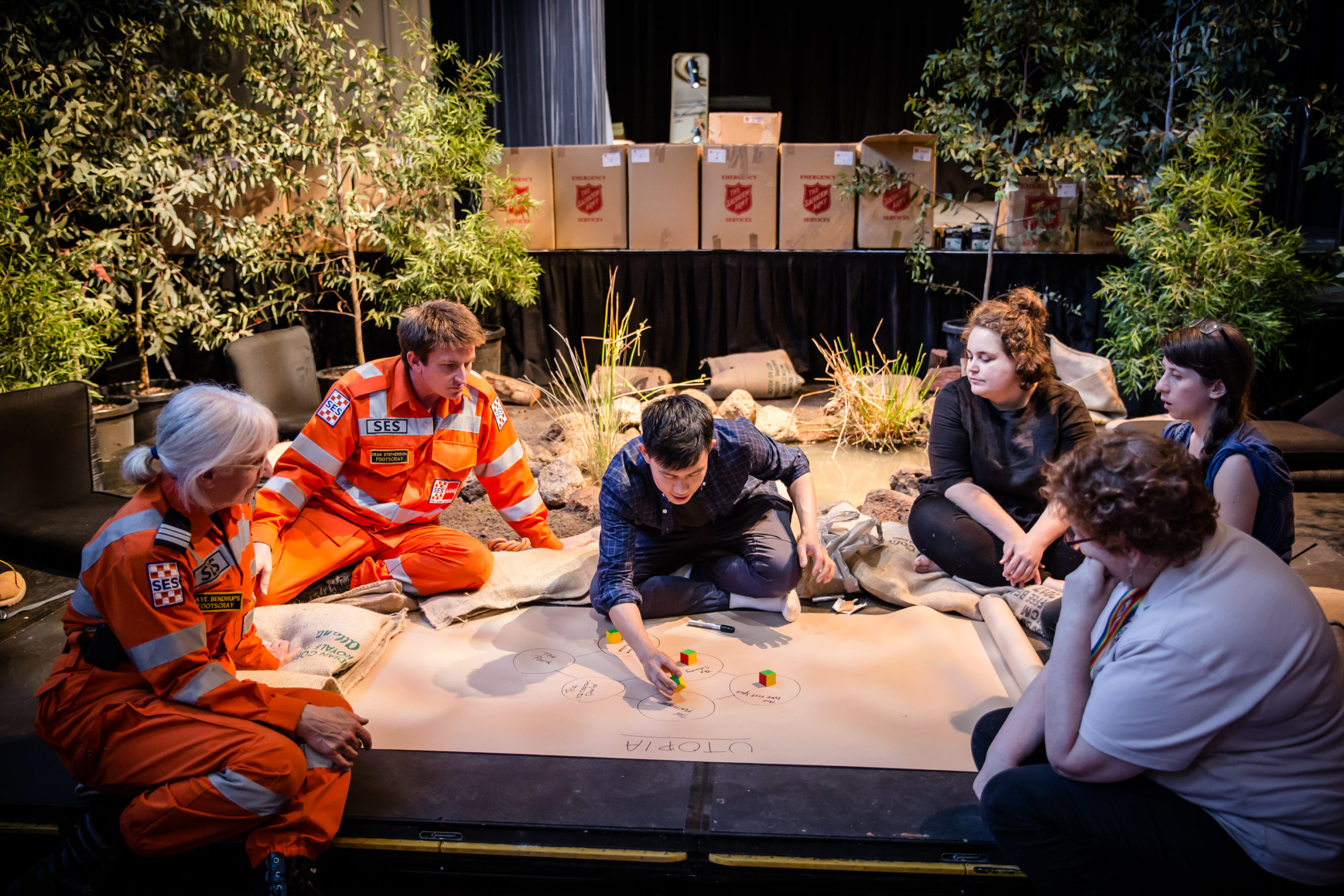Re-remembering Community
David Pledger
This piece is from the collection, In The Time of Refuge.
(1) In 2001, Belgium’s Royal Flemish Theatre (KVS) re-located to the now-infamous suburb of Molenbeek on the west side of the Brussels-Charleroi canal for three years whilst their theatre in the centre of town was being renovated. Artistic Director, Jan Goossens, tried to find ways of engaging with the large-minority Muslim population, committed to the idea that a theatre should be connected to its neighbourhood. Despite his best efforts, he could find no constant way into the community. However, on return to the city-centre, he reoriented KVS’s mission to contemporary, multilingual, multi-racial and multi-disciplinary creation building strong links between artists based in Belgium and those in Africa and the Global South. Goossens once told me that it no longer made sense to be engaged so profoundly in the international scene when the international was so present in his backyard. Why travel over the seas when across the canal was another world altogether?
(2) In 2014, on assuming Artistic Directorship of La Boite Theatre in Brisbane, Queensland, Todd MacDonald started from a similar place of inquiry to Goossens. He asked: what if the theatre’s audience was drawn from within a kilometre-radius of the venue? The question operated as a North Star for his six years leading the company and his programming altered accordingly, including the creation of a verbatim theatre piece, The Neighbourhood. MacDonald wanted to address the fact that the relationship between local community and a metropolitan performing arts entity is often overlooked in its artistic ambitions as is the effect the community can have on its artistic identity and programming.
(3) When Arts House operated both North Melbourne Town Hall and The Meat Market as performance venues from the early 2000s, it was renowned for presenting high-quality, experimental, contemporary performance. The programming was well-regarded nationally and internationally. And yet their audiences would not have reflected anything but incidental membership of the local community. In this regard, they were not anomalous in Australia’s cultural scene. Historically, Australian contemporary performance culture is a predominantly white, middle-class activity. Its audiences reflect this composition and even over the last 30 years as the dynamics of cultural diversity impacted on those that make, manage, produce and present, audiences still tend to reflect the dominant demographic.
(4) In 1991 I was standing outside the Victorian Arts Centre with Thomas Le, a graphic artist whose recent exhibition at Footscray Community Arts Centre charted his extraordinary journey from Vietnam to Australia as a ‘boat person’. Thomas was advising me on a multi-lingual production I was preparing for the Melbourne International Festival for the Arts and we were scouting for venues. When I said it might be possible to use The Playhouse, he said we could pretty much kiss goodbye any Vietnamese audience. The Arts Centre was too forbidding for his community, too formal, too official. I never liked it much for its red carpet, gold balustrades and low ceilings but seeing the Arts Centre through his eyes I understood it had an ambience that could viscerally deter a whole community from walking through its doors.
(5) Scroll forward 30 years and as I enter North Melbourne Town Hall I am reminded of my long education about architecture and art spaces that Thomas set me on. It’s not an easy building; its emotional temperature is cool; its Victorian architecture is austere; its interior design is the antithesis of open plan; the experience of the foyer verges on the inhospitable; hierarchy oozes out of its plaster pores; the building’s footprint shouts colonisation; power resides behind imposing wooden doors. It’s not an easy building. And yet, it’s a designated emergency relief centre. And somehow the building makes sense. A Town Hall, a hall for the town, the community, to assemble, a neutral space, a haven, a refuge, a place that ensures one’s ‘state of being safe or sheltered from pursuit, danger or difficulty’. If you change the function of a building, you change the public’s relationship to it. If North Melbourne Town Hall is only a contemporary performance space, then it struggles to project meaning into the local community. If North Melbourne Town Hall is a performance space and an emergency relief centre, its meaning changes for the community and its identity is changed by the community.
(6) It’s a hot summer’s January day. Angharad and I are walking and talking our way around Melbourne’s Botanical Gardens navigating a path through shade. She’s very animated. We are one year on from the first of Melbourne’s rolling 2020 lockdowns. There was a lot that went wrong. Particularly in the hard lockdown of the North Melbourne and Flemington public housing towers in July. The learnings that had accrued in the Refuge program seemed apt for just such a situation. Why weren’t they incorporated in Government responses? Undoubtedly, there is a significant gap between such learnings and embedding them in policy. Perhaps also the global pandemic came a year too early for those learnings to be lifted up out of the program into hard-nosed policy discussions. Angharad recalls a conversation with Josh Wright who sat in her chair after she left Arts House. He’d said that Refuge had changed how he behaved in his community during the lockdowns. I said it was similar for me. I told the story of elderly neighbours in our surrounding streets whom we properly met as a result of a what’s app group we set up in the first (soft) lockdown in March. The neighbourhood had committed to watch out for the elderly and vulnerable, checking in to see if anybody needed shopping or assistance getting to medical appointments. I saw these exercises of mutual aid through the prism of Refuge, in particular the gatherings that Arts House had called in January 2020 around the extreme bushfires that had touched all Australians. Impact, what we have been hard-wired to measure in the arts so as to justify funding, cannot always be measured in policy and revenue. Impact occurs at a much more granular level, in community, in society. In fact, you need the tendrils of impact (rhizomes) to be growing in the community in order to respond to growth in policy. If community is already growing new behaviours, then policy acts as a lattice that facilitates its pace. If there’s no growth, the lattice is just a piece of wood.
(7) A general perception of the arts in Australia is that they are not integral to society and therefore not connected to community. They are either special, or they’re elite, or they’re weird. This is partly a function of politics. It suits the politics-of-the-day for the arts to be perceived in this way; it diminishes their power and social agency; the arts can be more easily controlled as a force for dissent if they are perceived to be elitist.
However, it’s a perception that is, in part, a function of reality. The rhetoric of the arts hovers around social inclusion, but major cultural institutions are peopled by the predominantly white, middle-class, privately schooled and ‘Go8’ educated. This does not prevent those institutions from creating community, it’s just that community tends to reflect this profile.
The outer echelons of artistic production – the small organisations and independent sector – tend to be more inclusive, motivated by a desire to represent society more fairly or to pursue missions of social justice and equity and are peopled by those who are attracted by these values. Similarly, the community created by these groups and social actions tend to reflect this make-up. Arts House is one of these institutions motivated by a desire to generate community around its public program and cultural activities. Refuge is a key protagonist in that process. But what is that community?
(8) For Emergency Services Manager, Steve Cameron, the Refuge LAB is the community,
…a unique community where people can connect and be creative in developing a shared purpose in context. This is achieved by building knowledge and relationships through listening, learning and understanding many different perspectives. The maturity in these complex and sometimes uncomfortable processes are also enablers for more people to join and learn to work together by contributing in different ways. This is also an important demonstration of how we (diverse communities and supporting organisations) can support each other to share, seek guidance and respectfully challenge one another to overcome perceived fears and barriers, while continuing to navigate the unknown.
Over time, Refuge created an ongoing, evolving community of artists, cultural operators and emergency services stakeholders. In the 2019 iteration of Refuge: Displacement, members of the North Melbourne community were drawn into the program proper and First Nations artists and elders led the proceedings constituting what many felt as a vital, temporary and genuinely unique community. It was a trend that had been established as a program ambition from the outset.
These perceptions should not be taken lightly because they refute a prevailing view that society is in a process of atomisation. They also suggest that community means different things for different people. Faye Bendrups, who traverses the worlds of artistic and volunteering communities in Australia and overseas, has a view of community characterised by an absence of boundaries:
It’s somehow people who come together to form communities, those communities might be virtual, you know, your community might be online. And we look at things that happened where people set up Facebook groups, or they set up a local community garden, or they set up, you know, some kind of other market or whatever it might be. They’re not all necessarily in the same geographic area, people come in and out of those spaces. So, it’s very fluid, the way communities can be set up or can be regarded. So, I think that communities can be multiple, and you can be a part of many different communities at the same time.
It is an open and productive way to think about the versions of community created by Refuge with the Lab at its heart. Fulfilling Angharad’s ambition, Refuge built a community around the problem of profound changes to our climate. But it is the corollary of that ambition which underpins the program’s trajectory to take the radical steps necessary to halt further emissions. Which begs the question: how do you turn that community into a force for change?
(9) Conversation. That’s how you do it. Or more precisely, talking with and to others. Conversation. Lorna Hannan’s oeuvre for Refuge, Ruth Crow Corner, is built on the art of conversation. The duet. The trio. The quartet. Lorna talks of the ‘community mind’ wherein conversation triggers memory; the community mind is about sharing understanding, cultivating trust, behaving respectfully, all inscribed in memory. In the first iteration of Refuge, Lorna assembled a whiteboard of post-it notes as she recorded the concerns of community members who had come to speak with her. She noticed that the process was both cognitive and kinetic. People thinking about their concerns, writing them down and placing the post-it notes specifically in relation to the empty board space and other notes already stuck. At a point, she was struck by the shape and movement of the notes; they appeared to be a swarm, like a swarm of bees, but instead of bees, of ideas.
So that was a really big message, as far as I was concerned… we hit on something strong and useful. But not just useful in the immediate sense, but useful because it was fused into memory.
Lorna found that her project was remembered because of the physical act of posting notes (objects) and the representation of those notes as a kinetic thing (a swarm). It was a gift she re-made each year and activated in her conversation space. In 2017, she melted an oversized ice-cube; in 2018, she wore a mask; in 2019, a spinning globe hung from the ceiling. The combination of object and movement enhanced the process and quality of conversation, inscribing its content into a common experience, weaving its actions into the memory of the community mind.
(10) In 2021, this effect amplified in her collaboration on Ruth Crow Corner with Taungurung artist, Hannah Morphy-Walsh. Deftly presented in 2021 with Creative Producer Sarah Rowbottam as a series of walks and talks, they created a Speakers Corner at the North Melbourne Community Centre Oval, inviting the public to witness and participate in an homage to renowned communist, political activist and long-time North Melbourne resident, Ruth Crow. At Ruth Crow Speaker’s Corner, a parade of local artists, activists and storytellers speak of local matters: food production, urban development, the life of water, and community assistance for an international student.
On the surface it’s a meandering through the community life of North Melbourne, a deceptively disarming way to pass an afternoon abetted by generous rounds of Ethiopian coffee. As the hours pass and the mind wanders, the idea burns that the event is in and of itself a performance of community. There is a slow enticing dramaturgy at play here and once surrendered to, I catch myself re-remembering that my mother lived in North Melbourne for 15 years, from when she arrived as a 5-year-old from Italy in 1931. Giuditta Stellato, her older sister Maria and my Nonna, Elisabetta (born Passarelli) were met at the port of Melbourne by my grandfather Luigi (Louis) Stellato who 5 years earlier had stowed away on a ship from Napoli to escape the Fascists who had threatened to jail him for his socialist sympathies. The family lived in a house with a dirt floor, my mum went to the local school, St Joseph’s Primary and my Pa ran a fruit-and-vegetable store down the road at Victoria Market. The memories come in a rush and I am transported back to multiple points in my family’s history. I re-remember all of this because of the stories told by the residents.
Re-remembering re-creates community, reaching back in time, time and again. It is this performance of community that activates the process of re-remembering through oral histories being passed on across generations. Refuge performs this function constantly and in many different ways and forms. As Steve Cameron says, it is a community, of artists, collaborators, stakeholders, a community made by art that, by its very presence and continuity, by reaching back in time and looking to create just, sustainable futures, constitutes a force for change.
Header Image: Portage: Shelter Weaving Workshop by Jen Rae with Master Weaver Vicki Kinai (pictured), Refuge 2019: Displacement, Photo by Bryony Jackson.
Image description: Four women sit on a woven cream and blue mat talking and practicing knot tying and weaving techniques together.
About David Pledger
